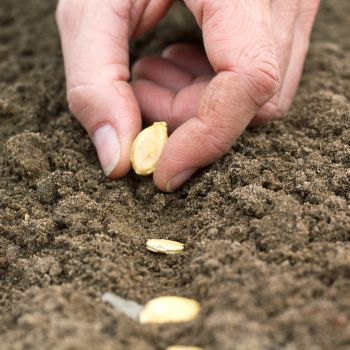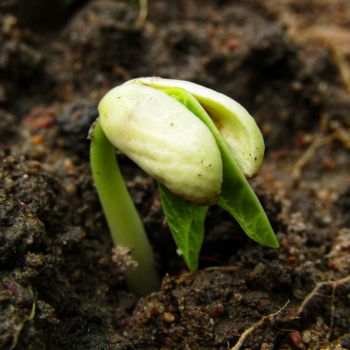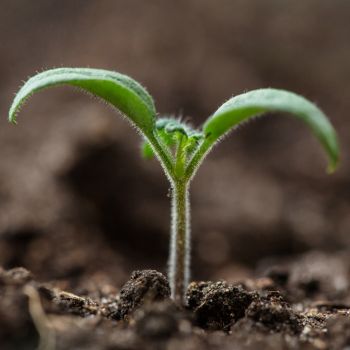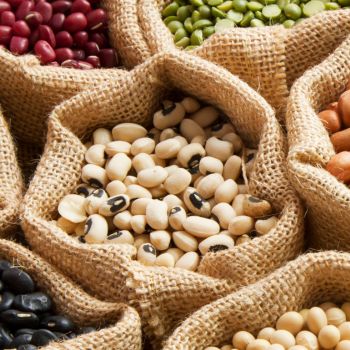It’s an exciting day, you have healthy strong seedlings with at least 3 true leaves, the sky is nice and overcast and it won’t be too hot for a couple of days. All these signs point to one thing. It’s time to plant out your seedlings!
So let’s go through a couple of things you can do to be sure that your seedlings get the best start possible in their new home.
Are They Ready?
When your seedlings begin to emerge from the soil, the first leaves to appear are called Cotyledons and look quite different from the leaves that will appear later on. The job of these simple leaves is to provide stored food to the young, growing seedling for a short time. The leaves that appear next are called true leaves and it’s these that you will need to wait and see at least 3 or 4 of before planting out your seedlings.
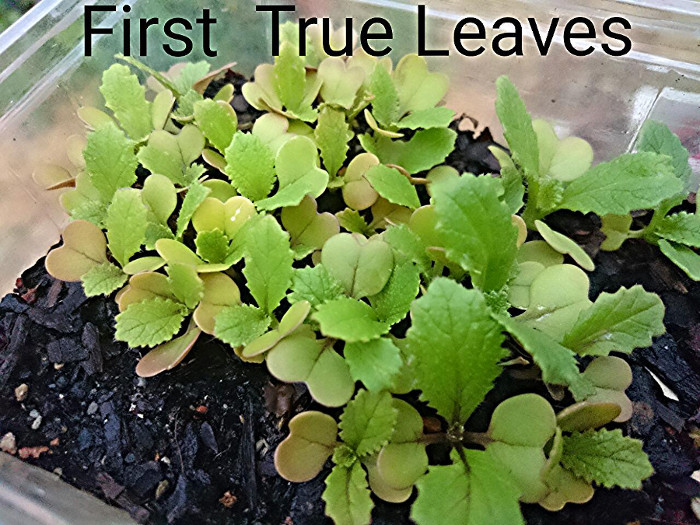
Above: Cabbage seedlings with their first true leaves. (Photo by Sarah Rasdall)
Preparing your seedlings for transplant
For a couple of days before you plant out your seedlings, it’s a good idea to water them thoroughly by giving them a drink twice a day. Doing this strengthens the seedling and loosens up the soil which will make it easier to separate the roots later.
If you are planting out seedlings that you’ve started inside at the end of winter, it’s best to give them a few days outside near their final position to harden them up and get them used to direct sunlight. Start with just a couple of hours a day and work up to a full day in the sun so as not to shock them by outdoor conditions such as wind and direct sun.
How’s The Weather?
I’ve learned from experience that it’s a good idea to plant your seedlings out in the afternoon of an overcast day that is going to be followed by more overcast days or at least a few days that aren’t terribly hot. Too much sun on their first day out can quickly kill off even the strongest of seedlings, so keeping an eye on the weather will give them a huge advantage and save you some seedling death heartache. If you don’t get any ideal planting out days and the weather is hot and sunny, just provide some shade for your seedlings until the sun goes down on their first day.
Preparing A New Home
Dig a hole that is almost twice the size of the rootball and water the bottom of the hole so that it’s nice and moist. At this point you can also add a small amount of organic matter such as sheep manure or compost to make the soil nice and rich. Doing this will energize the soils food web so that your seedling is met with root friendly fungi, nutrients and good bacteria. All the things a plant needs to grow big and strong.
Gently But Swiftly, Plant Them Out
Seedlings are delicate creatures and require gentle hands when it comes to planting out. To remove your seedlings from their original pots, place your fingers around the stem of the plant and turn the pot upside down. Pinch the bottom of the pot if possible or tap it gently to encourage the plant to fall out into your hand. If the plant won’t budge it may have been left in the pot too long and become "pot bound". If this is the case don’t fret, just get a long dull bread and butter knife and run it around the inside of the pot to dislodge any roots that may have become attached to the pot, then repeat the first step.
If you have a number of seedlings in the one pot and their roots are tangled together, I’ve found that it’s best to use the same technique but to follow this by putting them into a tray of water. Cat litter trays work really well for this but if you don’t have one try using a baking tray. Simply lay the seedlings out into a tray of water and use the buoyancy of the water to take the weight off the root ball. Then you can gently prise the seedlings roots apart without tearing them. It’s important not to lose a lot of the soil that is around the roots as it contains many of the good bacteria that the plants need to make a safe transition to the garden. Seedings don’t like being out of the ground for more than 10-15 minutes, so keep the root ball wet at all times and get your babies in the ground as quickly as possible.
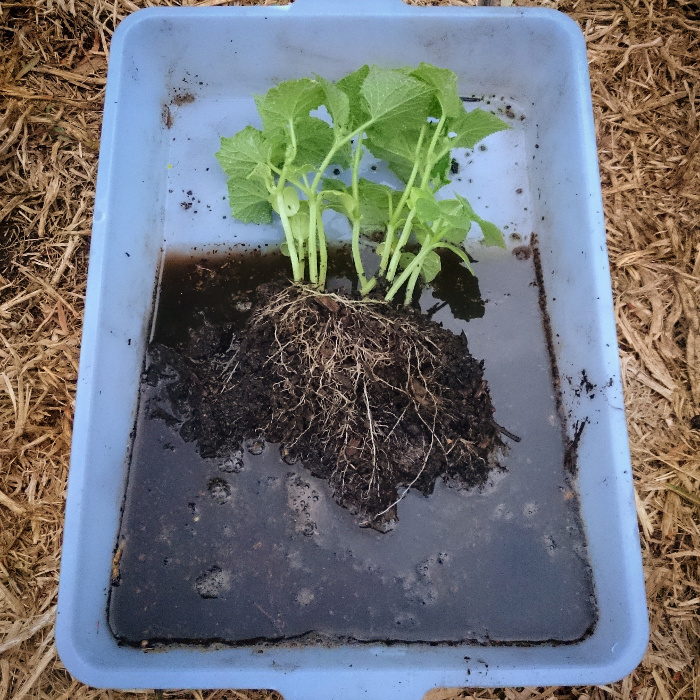
Above: Use a kitty litter tray to gently separate seedlings that have tangled roots. (Photo by Sarah Rasdall)
If you are planting out a row of seedlings, you can use a piece of string tied onto 2 sticks pushed into the ground to mark out the row that you want to plant into. This way you’ll end up with a nice straight row of plants.
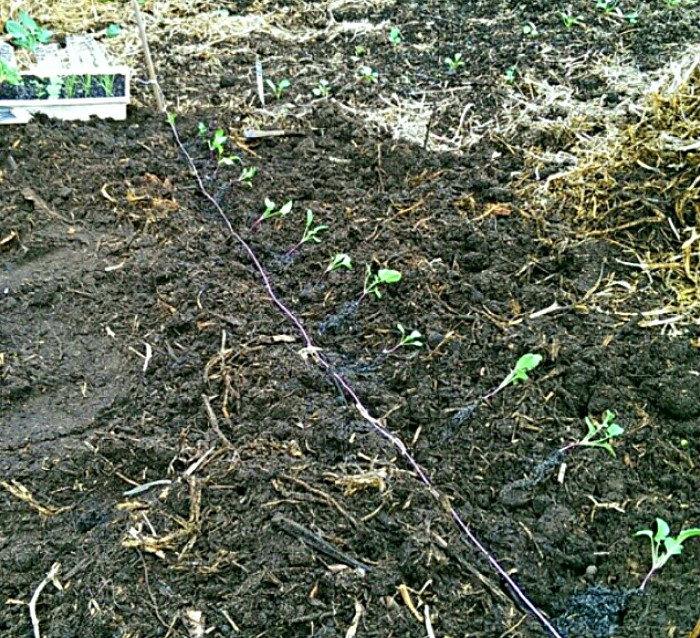
Above: Use string to mark out your row for planting. (Photo by Sarah Rasdall)
Now gently place your seedling into the prepared hole and cover it back in with the soil you took out. Pack the soil firmly over the rootball and water it in with some liquid seaweed or similar soil conditioner. Then cover the entire area with a thick layer of mulch to lock in the moisture and keep the soil cool during hot days.
Give It Time
Some seedlings don’t like being planted out and can look almost dead the next morning. Don’t panic just yet! Water the plants thoroughly the morning after planting and again that evening. If they still haven’t bounced back the following morning, water them morning and night again until they start to look like they are going to be ok. Trim off any leaves that have died off so the plant doesn’t waste valuable energy trying to keep them alive.
Now dance a jig because you’re done! *applause*


